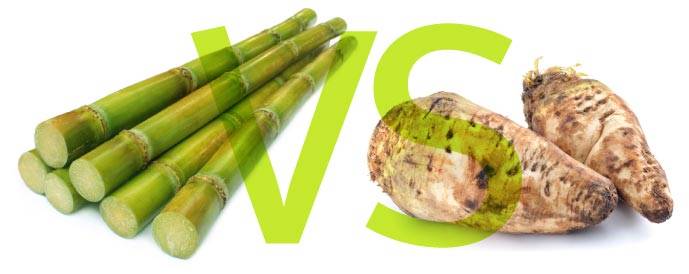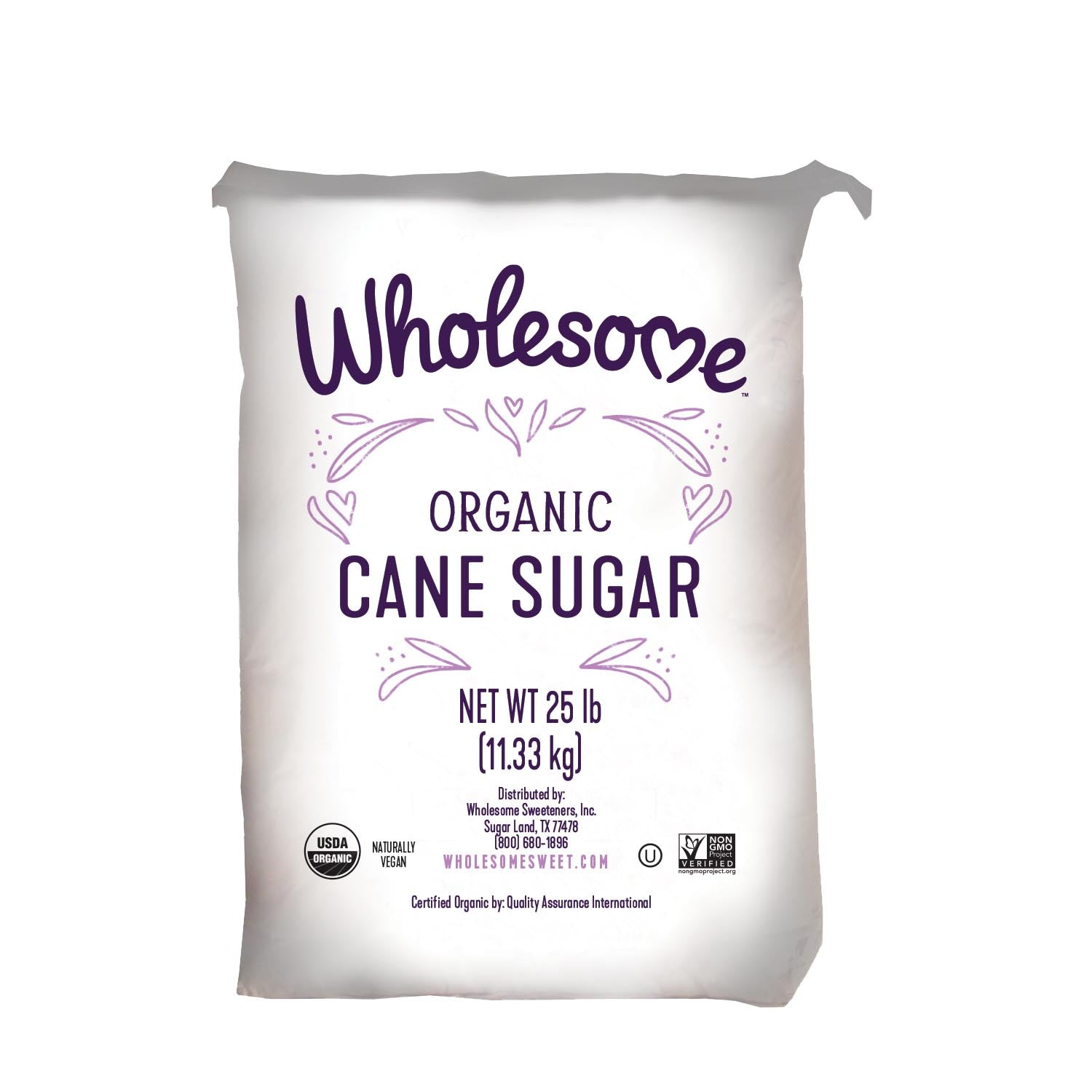Cane Sugar Processing: Cutting-edge Strategies for High Quality Manufacturing
A Thorough Guide to the Ecological Effect and Sustainability Practices in Walking Cane Sugar Handling
The environmental impact of walking cane sugar handling provides a complex array of challenges that warrant mindful exam. From dirt deterioration and too much water use to the carbon impact connected with farming and production, the effects of conventional practices are far-reaching. On the other hand, the adoption of ingenious sustainability procedures uses a path toward extra liable manufacturing techniques. Recognizing the interplay between these problems is crucial for stakeholders in the market. What particular techniques can be implemented to strike a balance in between efficiency and environmental stewardship? The answers lie in a closer look at both the obstacles and potential solutions.
Review of Cane Sugar Processing
Walking stick sugar processing includes a collection of organized actions that change sugarcane right into polished sugar. Originally, harvested sugarcane is carried to refining facilities, where it goes through cleansing to eliminate soil and debris. Following this, the walking stick is crushed to draw out juice, which is then cleared up by eliminating pollutants through heating and the enhancement of lime.
The clarified juice goes through dissipation, where water is eliminated to concentrate the sugar web content. These crystals are divided from the remaining syrup utilizing centrifugation, resulting in raw sugar.
The final item is after that dried and packaged for circulation. Throughout this entire procedure, keeping efficiency and top quality control is important to guarantee the sugar meets sector criteria. Each action in walking stick sugar processing not just adds to the end product but additionally has implications for source usage and waste generation, setting the phase for discussions on sustainability and ecological influences connected with sugar production.
Environmental Challenges of Production
The manufacturing of walking stick sugar provides several considerable ecological challenges that warrant focus. One primary concern is the comprehensive use agrochemicals, including plant foods and pesticides, which can bring about soil degradation, biodiversity loss, and contamination of neighborhood water sources. The drainage from sugarcane fields usually lugs these chemicals into close-by communities, disrupting marine life and influencing the health and wellness of communities reliant on these water bodies.
One more difficulty is the high energy consumption connected with sugarcane processing. The boiling and refining stages call for considerable warmth, largely created by shedding fossil gas, adding to greenhouse gas emissions. In addition, the extensive acreage needed for sugarcane cultivation can lead to deforestation and environment devastation, further worsening environment modification and threatening wildlife.
Moreover, the labor techniques in some regions elevate moral problems, as employees may face poor working conditions and insufficient salaries. This scenario usually bolsters a cycle of hardship in regional communities. Cane Sugar Processing. Dealing with these ecological challenges is essential for establishing a lot more lasting techniques in walking stick sugar manufacturing, eventually benefiting both the environment and the neighborhoods associated with this sector
Water and Land Usage Impact
Water resources and land utilization are crucial parts in the walking cane sugar sector that dramatically affect the setting. The cultivation of sugarcane needs substantial water input, with estimates recommending that it can take in as much as 2,000 liters of water per kg of sugar generated. This extensive use water commonly leads to exhaustion additional reading of regional water resources, influencing not just the sugarcane haciendas however also bordering communities and areas that count on the exact same water resources for agriculture and residential usage.

In addition, land usage for sugarcane farming can cause deforestation and the conversion of natural environments into monoculture plantations. This method lessens biodiversity, disrupts local communities, and adds to dirt destruction. The development of sugarcane areas often encroaches on valuable agricultural land, creating competitors for resources in between food and biofuel manufacturing.
Sustainable practices, such as maximizing watering methods and carrying out crop turning, are necessary to reduce these effects. By taking on more effective water usage and land management strategies, the walking cane sugar market can decrease its ecological impact, guaranteeing a balance between agricultural performance and ecological conservation.
Greenhouse Gas Emissions
Greenhouse gas exhausts represent a substantial ecological problem within the cane sugar handling sector, especially as agricultural techniques broaden to fulfill worldwide demand. The growing of sugarcane, a plant that grows in exotic environments, relies greatly on synthetic fertilizers and pesticides, which add to laughing gas discharges. Furthermore, land-use modifications, including deforestation for brand-new sugarcane ranches, release carbon dioxide kept in greenery and soil.
Throughout handling, power usage is an additional major resource of greenhouse gas emissions - Cane Sugar Processing. Several sugar mills make use of fossil fuels to power machinery and create warmth, resulting in considerable carbon more helpful hints impacts. Moreover, the transport of raw sugarcane and ended up items includes layers of discharges through gas combustion in lorries
The advancing impact of these emissions worsens environment adjustment, posing threats not only to the setting however also to the long-term practicality of the market. Stakeholders need to recognize the immediate demand for thorough techniques that resolve these emissions. This involves evaluating current farming methods, refining methods, and transportation systems to recognize locations for enhancement and mitigation. Dealing with greenhouse gas emissions is essential for promoting a more lasting walking cane sugar industry in a changing climate.

Sustainable Practices and Innovations
Sustainable methods and advancements are progressively important in the walking stick sugar processing industry as stakeholders look for to decrease ecological effects while preserving performance. One significant innovation is the implementation of integrated plant monitoring, which maximizes resource usage by integrating dirt administration, insect control, and plant rotation techniques. This technique enhances return while decreasing chemical inputs and preserving soil health.
In addition, the fostering of renewable energy resources, such as biomass from sugarcane deposits, has actually gained grip - Cane Sugar Processing. By converting waste products into energy, processing facilities can lower their reliance on fossil fuels, thus lowering greenhouse gas discharges
Water monitoring techniques have actually additionally seen renovations through the recycling and reusing of water in handling plants, dramatically lowering freshwater consumption. Innovations in innovation, such as accuracy agriculture, enable farmers to keep track of crop health and source use more efficiently, guaranteeing lasting cultivation techniques.
In addition, qualification programs like Fair Profession and Jungle Alliance motivate environmentally responsible farming methods click for source and advertise social equity within the supply chain. By embracing these lasting practices and developments, the walking stick sugar processing industry can boost its durability and contribute positively to environmental stewardship.
Conclusion
The environmental influence of cane sugar processing presents significant challenges, consisting of dirt destruction, high water consumption, and greenhouse gas discharges, alongside honest issues related to labor techniques. Dealing with these concerns with lasting practices, such as incorporated plant management, eco-friendly energy adoption, and water recycling, is important. By advertising socially fair and environmentally accountable approaches in sugar manufacturing, the industry can alleviate its adverse impacts, making certain a more sustainable future for both neighborhoods and ecological communities involved in this industry.
Walking stick sugar handling entails a collection of systematic steps that transform sugarcane into refined sugar. Each step in walking stick sugar processing not only adds to the last product yet also has ramifications for resource use and waste generation, establishing the stage for discussions on sustainability and ecological effects associated with sugar production.
Greenhouse gas emissions stand for a substantial ecological concern within the walking cane sugar processing sector, specifically as farming practices increase to meet global need.Sustainable methods and developments are progressively crucial in the walking stick sugar handling sector as stakeholders seek to decrease ecological impacts while preserving productivity.The environmental effect of walking cane sugar processing offers considerable challenges, consisting of dirt deterioration, high water consumption, and greenhouse gas discharges, together with ethical problems related to labor practices.